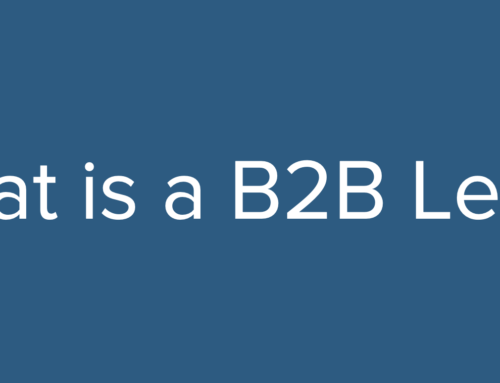The Marketing Ante
What do you, as a CEO, need to know about marketing? If you have a marketing professional in a leadership role on your team, you might initially think you don’t need to know that much. Of course, how do you know if they are doing a good job? If you are a CEO that has part-time marketing staff, or maybe just tactical marketing support (graphics design, email marketing, etc.), and/or directly makes decisions on hiring and maintaining outsourced marketing services, you likely are much more involved in ongoing marketing decisions.
I am suggesting here that every CEO needs to understand 7 key things about marketing to effectively provide the leadership to make good decisions about marketing spend and effectively evaluate results. Many CEOs have no formal marketing training and have learned bits and pieces about marketing and marketing ROI metrics from those they hired (inside or outside) to execute marketing. This series is about storing these 7 key things in your knowledge bank for future use as you determine lead your company in good decisions about marketing.
So, let’s get started with the first of our seven marketing topics.

The Marketing Investment Ante
Any business can generate some results with a little marketing. However, to create long-term, measurable results from repeatable marketing tactics, there is an “ante” of marketing foundation work that must be done.
Figure 1 provides a quick overview of these marketing ante investments that a CEO must support to build long-term marketing success.
BRAND STORY
The most fundamental investment is in your brand and brand story. This isn’t just a logo, a color palette, and an “about us” on your website. This is an investment in developing the story and the beliefs that communicate “why your company exists” and the unique values you bring to customers and your community. This is a story that every single person in your business should know and be able to share. Every customer-facing document, presentation and web page should align with this brand story in terms of tone, word choice, messaging, and value propositions.
While a small company started by an entrepreneur may start with this brand being evident (usually based primarily on the entrepreneur’s story and values), this needs to be captured and revisited to ensure that it continues to represent the company and permeates the organization from mission to everyday activity.
MARKET RESEARCH & AUDIENCE SEGMENTATION
A second ante involves marketing-led activity that ensures your company and products/services stay aligned with your target market(s). For many businesses, this is not formal at all. Some businesses were started very organically with some intuitive and experiential market knowledge and obvious market segments. When a “founder” is still the CEO, the CEO just knows this, and it is likely that there was no formal research.
Some of your companies were founded specifically around market research studies that revealed opportunity in a new segment or an underserved segment.
Either way, as your company grows and as market conditions change such as demand, competitive landscape, and your own product/service offerings evolution, you must go back and continue to invest in research that maintains an updated picture of the market pain points and needs, market demand and pricing, competitive changes and market share, and prioritized segments based on opportunity.
It’s not hard to find examples of even large companies that failed to stay vigilant on how their market was changing, and this “ante” is the investment you must make to avoid being one of those examples.
MESSAGING
The next two, messaging and content really go hand in hand. You simply cannot have effective content without messaging.
Messaging, sometimes called “value propositions” is likely the single most neglected formal marketing activity for the many companies I have worked with over the years. For so many, the idea of messaging is a very general activity of just asking salespeople what they share with customers that works, or just listening to the owner talk about their products, or sometimes some older documentation of value propositions that is out of date.
Try this. Go to your company website and cover your company logo with your hand. Now, when you read it without seeing the logo, could this site be you or any other competitor you might have? Or, do you immediately see the value that your company is uniquely bringing to your customers? If on the home page, you only really see “what” your company does, then you don’t have messaging.
For each market segment and each persona that you consider part of the buying process (decision makers and influencers), you should have distinct messaging (value propositions) that engage those buyers as they see how you solve their problems and make their job easier or more profitable.
CONTENT
The last “ante” item is the investment in content. Sales sheets, spec sheets, demo presentations, and product brochures are the usual initial content for so many because sales needs to have tools to sell. Those are necessary but the content “ante” goes well beyond this.
Those that buy from you don’t start at the point-of-need for product information. The buyer journey goes through phases where a buyer is discovering problems that need to be solved, looking for possible types of solutions, looking for what other people like them use to solve the problem, looking at various providers and features, and requesting quotes and evaluating products. The “typical” sales materials usually address the later stages of that journey.
The content “ante” is about creating content across all of those stages to nurture buyers through the process. For some of you, you cannot sell your product unless you help prospects discover they have a “new” need they did not know about. In that case, you have to educate your market about their needs. In other markets, the demand is obvious, and it is more about competitive positioning, reviews, and value.
To market your products and/or services, you must invest in the types of content that marketing will use to engage buyers along that journey. If you just say “do marketing” with no content, or just brochures or sales sheets or your website, you will struggle to build any long-term momentum and ROI with marketing.
In summary, the first thing you need to know about marketing is that it costs money. It is an investment that must be made. If you skip this ante, your website, marketing efforts, and even sales presentations will be missing key content that truly engages prospects. Competitors that are doing the work – making the marketing investment – will outperform you every time. You simply cannot catch a fish without bait and content is your real bait!
Related Reading
For some additional content and suggestions on the marketing “ante” elements, please read one of my previous posts titled, “The One-Person B2B Marketing Department Playbook – Marketing Investments You Can’t Skip.” For more detailed information about Content specifically, please read “The One-Person B2B Marketing Department Playbook – Marketing Content: Baiting the Hook.”






